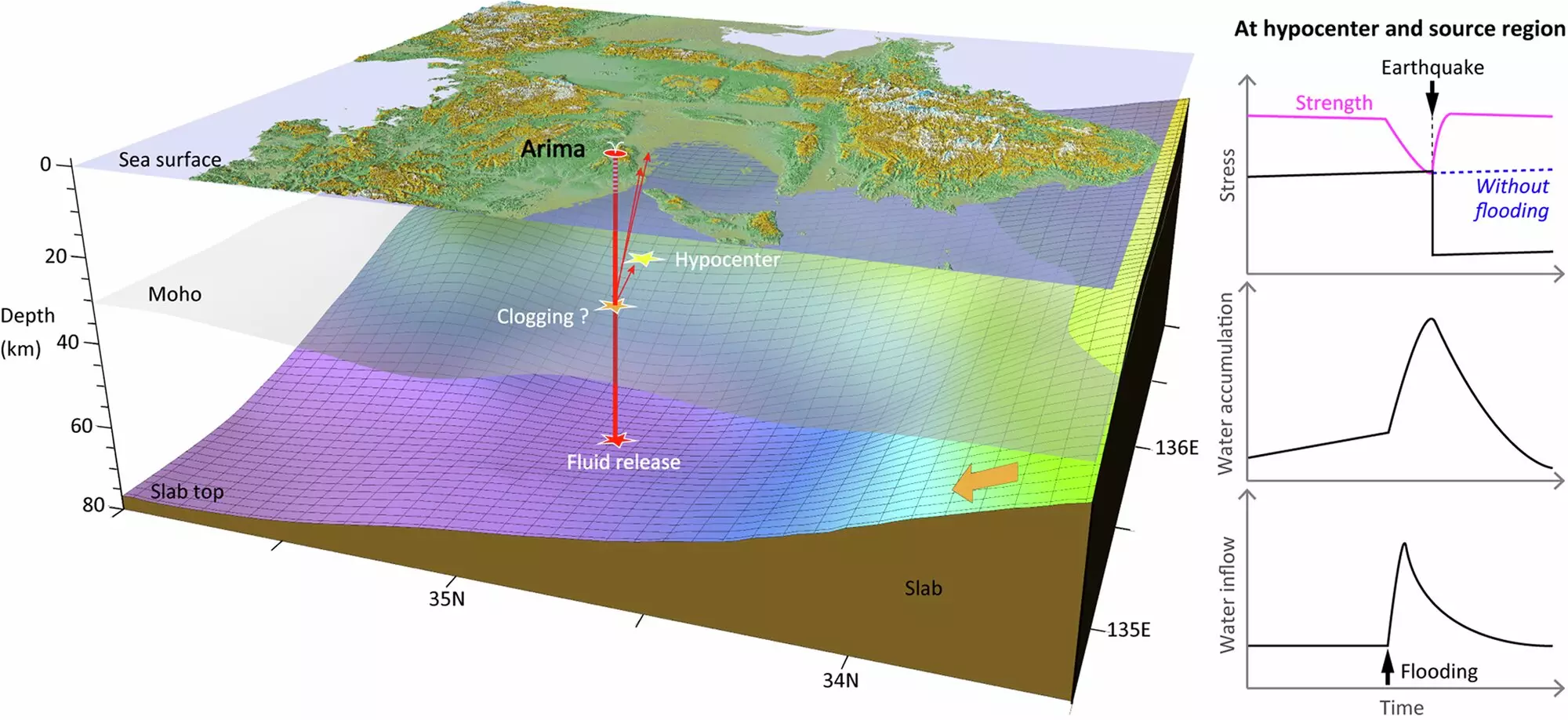The intricate relationship between water and seismic activity has long intrigued scientists and researchers. A recent study conducted by scholars at the University of Tsukuba sheds light on a compelling hypothesis regarding the 1995 Kobe earthquake in Japan. This earthquake, which devastated southern Hyogo Prefecture, may have deeper roots than previously considered. The researchers propose that the tectonic dynamics of the region were influenced by deep underground water flooding linked to Arima Hot Springs—a site famed for its therapeutic waters.
Central to the researchers’ findings are the analyses of stable isotopes, particularly hydrogen and oxygen, along with chloride ion concentrations in water from Arima Hot Springs. It is widely recognized that hot spring water is derived from groundwater encasing materials from the Earth’s crust. Through rigorous isotopic studies, the team discovered that the water in the Arima springs, which boasts significantly higher salinity than seawater, likely carries evidence of origins from the subducting Philippine Sea Plate. Although these findings are intriguing, the researchers also acknowledge the absence of unequivocal direct evidence establishing this connection.
The study, published in the journal Communications Earth & Environment, highlighted a significant correlation between the presence of plate-derived water and seismic activity preceding the 1995 event. Notably, increasing concentrations of chloride and radon in the groundwater were observed in this timeframe—an alarming precursor often associated with seismic events. As the 1995 earthquake drew closer, three out of seven studied springs exhibited an unexpected spike in plate-derived water. The volume of this water was estimated to surpass 100,000 cubic meters, indicating a potential weakening of the geological fault lines, thereby catalyzing the earthquake.
Interestingly, the researchers also draw parallels with the Matsushiro earthquake swarm that occurred between 1965 and 1967. This historical event, similar in nature, exhibited a notable influx of water sourced from the Philippine Sea Plate in the Matsushiro hot springs. These consistent patterns suggest that such phenomena might not be isolated to a single event or region. Instead, they may represent a broader geophysical principle where fluctuations in subterranean water levels can impact tectonic stability.
Given these revelations, tracking variations in hot spring water and its mineral components could pave new paths in earthquake prediction. The implications of this research are profound, emphasizing the need for interdisciplinary approaches combining hydrology, geology, and seismology. As global populations increasingly inhabit seismic zones, understanding these connections becomes imperative for disaster preparedness and risk mitigation. Future monitoring around hot springs like those in Arima and Matsushiro might yield critical insights, ultimately enhancing our capability to anticipate natural disasters that can have catastrophic repercussions on communities and infrastructure.
The work at the University of Tsukuba highlights the necessity of viewing geological phenomena through a multifaceted lens. Water interactions with tectonic structures may hold the key to understanding earthquake dynamics and frequencies. Continuous research in this fascinating domain can expand our comprehension of the Earth’s geological behaviors and contribute to safer living environments in earthquake-prone regions.


Leave a Reply